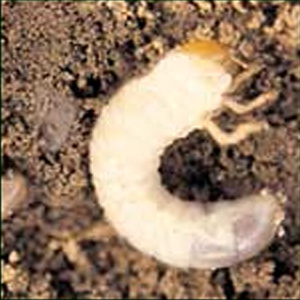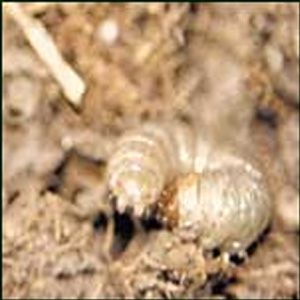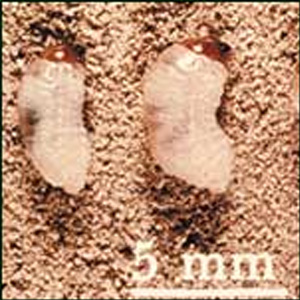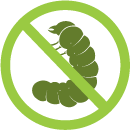Insect Management
A healthy, well-maintained lawn is the best defense against insect invasion. Insect damage is usually less severe on properly maintained lawns. Insects that infest home lawns are generally difficult to notice and their presence goes undetected until significant damage has been done. Insect damage can often be mistaken for drought damage. If the lawn remains brown or shows signs of thinning out despite watering, try closer examination for insects. Regular inspection of the lawn including leaves, stems, roots, thatch and soil will help to determine if the problem is insect-related.
What 'sucks' in your lawn?(Chinch bugs)
Did you know that certain varieties of turf grass such as Fiesta III Perennial Ryegrass contain a fungus called an 'endophyte' which gives the plant a natural resistance to sucking insects such as chinch bug? By overseeding this blend of grass seed into your lawn you can effectively eliminate some of the damage that these annoying insects cause.
One of the best ways to reduce the effects of chinch bug feeding is proper irrigation and fertility. Over fertilized lawns with quick release nitrogen promote excessive top growth. This attracts chinch bugs, as they love to feed on the fresh green growth. Using a balanced fertility program with slow release fertilizers reduces surge top growth thereby minimizing the attraction. Secondly, lawns that are irrigated properly suffer less damage as the grass is able to recover much faster from chinch bug feeding. Chinch bug damage is most severe during extended periods of drought. Damage from their feeding is most apparent in July and August.
Common signs of having a pest problem
In most cases the damage resembles drought symptoms. Large areas of your lawn may appear wilted with a yellowish brown color, however it will not respond to watering. If your lawn pulls up easily in these areas, this is most likely a sign that insects have been feeding on it. If your lawn also display signs of being torn up, this is usually a grub problem and the result of nocturnal animals such as skunks or raccoons feeding on the grubs.
Grub Control with Grub Terminator- A New Product Available for use in Ontario to Prevent the damage caused by Grubs
White Grubs are the larvae of 3 different varieties of beetle found in this area. The most common are the European Chafer beetle and the Japanese beetle. Eco-Gro Lawncare is now using Grub Terminator, a proven eco-friendly bacteria, encased in a granular, which will dissolve into the soil stopping grubs at any stage from causing damage to your lawn. This new product has a wide application window starting in late June, which will allow it to be used curatively and preventively, and will continue to work for up to 90 days, going after white grubs at any stage.
Who Should Get This Service?
- Lawns that have insect damage characterized by animals digging and turf areas that lift up easily (like carpet) from roots being fed upon.
- General browning of the lawn or small pockets of dead grass indicates white grub damage.
- Lawns that have a history of white grubs or other turf damaging larval insect populations.
If you think you have grubs or other insect problems contact our office to have your lawn assessed before it is too late.
Treament Prices begin at$89.50 |

Grubs
- C-shaped white larvae with brown heads
- Range in size from 1 -3 cm depending on the species
- Feed on turfgrass roots
- Lawn lifts up like a carpet
- Starts in late September
- Animals (skunks, raccoons and starlings) dig up grubs

Sod Webworm
- Adult is a fawn coloured moth
- Caterpillar is tan in colour
- Feed in September in thatch
- Turf pulls away like a carpet
- Soft green pellets found in dead grass area where grass can be easily pulled away
- Turf species containing endophytic fungi show resistance to sod webworm feeding

Hairy Chinch Bug
- Start as brick red nymphs in June/early July
- As they mature, they turn grey
- Adults are 4 mm long and have an X on their backs
- Turf appears sunken
- Chinch bugs suck plant juices from the grass leaves and stems
- With heavy infestation, large areas of turf may die
- Dead turf does not pull out easily (still well rooted)
- Can destroy entire lawn in a season

Bluegrass Billbug
- Adults are weevils about 5mm long
- Larvae are small, white legless with brown heads and are 5mm long
- Damage starts as small areas of yellow grass that pull away above the thatch
- Usually do not destroy entire lawns
- Sawdust excrement is found in the areas where the billbugs are feeding
- Turf species containing endophytic fungi show resistance to billbug feeding


